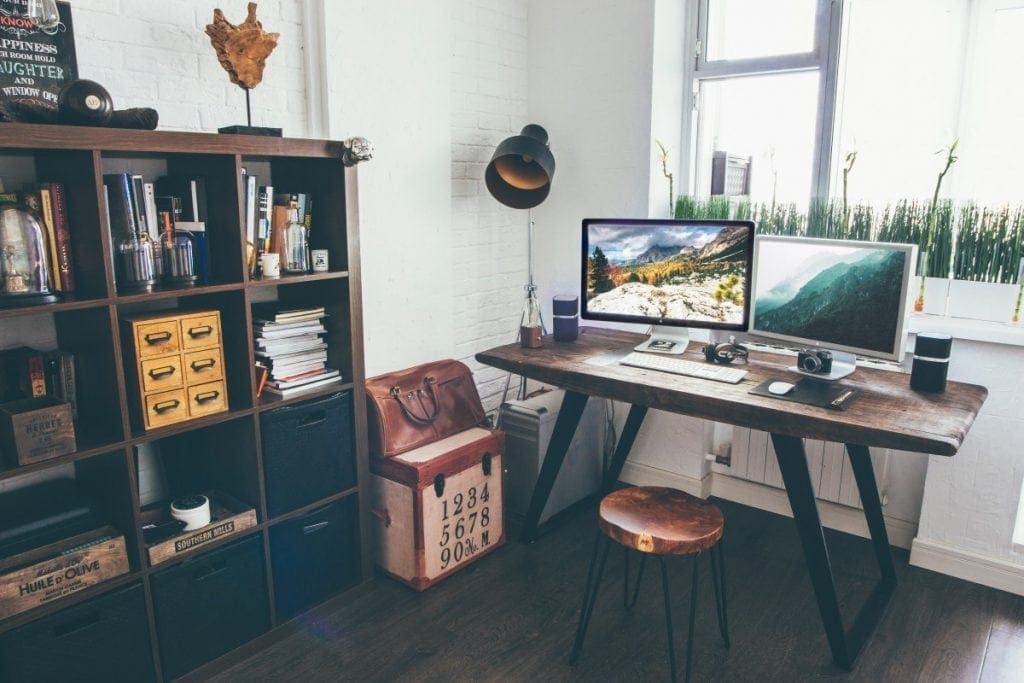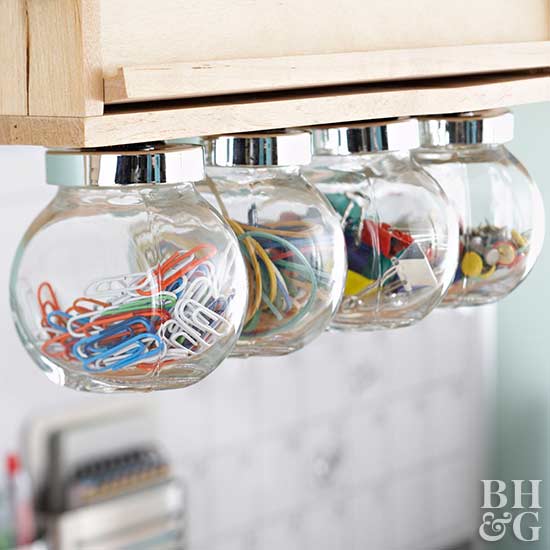Tips For Creating a Home Office
in a Small Space

When I first started working from home, I found myself struggling to get anything done. This was mostly because I struggled to adjust to the fact that my home, a place typically reserved for relaxing and unwinding, was now a place for concentration and productivity. I would laze around working from the couch, wasting time with my partner, and taking excessive coffee and food breaks.
Eventually, I realized I needed to set up a home office space, but the problem was that we lived in a tiny home. We had housemates, no spare rooms, and a crowded bedroom, so how was I going to go about creating a home office space in a cramped and shared environment?
I had to compromise with space to set up a small office in our cramped house, and after some adjustments to my desk location and setup, I ended up with a modest corner of productivity.
If you’re struggling to work from home or you feel like you don’t have enough space to, here are some quick and easy tips to make space for a home office:
 1) Choose the right space
1) Choose the right space
You don’t want to set up your office in the lounge/living area if that’s where the people in your home congregate. Sometimes that means converting your garage into an office space, and sometimes it means compromising with other spaces. You may want to find a little wall area in your room, settle in the far corner of the kitchen, or find a new use for a cupboard space by removing the doors.
2) Manage your cables
Nothing slows down productivity like a space that’s messy and doesn’t feel comfortable. Tuck your cables and wires away behind your desk and around the walls. You can use zip ties and even bread clips to help manage them and keep them from tangling up. Or, you can get some cable organizers. You’ll be thanking yourself next time you move or clean up your office space.
3) Color schemes actually help
The best home office setups are customized to suit the tastes of the people working there. You want to make the space feel yours by using colors that you associate with warmth and happiness. This encourages creativity, creates a sense of cohesiveness, and helps you feel calm and comfortable. Chaotic work environments with mix-matched colors can create a real feeling of hostility, making you uncomfortable and slowing down your overall productivity.
4) Windows and sunlight are your friends.
An important aspect of any office is access to sunlight. Sunlight improves your body’s vitamin D levels which directly relate to happiness levels. Sunlight also maintains your body’s circadian rhythm keeping you feeling awake. If you don’t have a window space, you should light well with lamps. Or think about getting a light therapy lamp to combat seasonal affective disorder issues. Also, consider potted plants to oxygenate your space and keep you calm.
 5) Water!
5) Water!
It may seem obvious, but keep a source of water nearby, whether it’s a large bottle, a jug, or setting up near a tap. When you’re working from home, like any other workplace, you need to stay hydrated, but regular trips to the kitchen can lead to distractions and procrastination.
6) Go tall
One of the best space ideas for a home office is to use the full height of your wall. Install shelving that goes high up, stack your drawers, and make use of the space below the desk. By building vertically instead of horizontally, you’re still using the same amount of floor space in your home while optimizing storage space, keeping everything you need nearby.
7) Divide a space up
If you’re really struggling with finding a room to set up your office, divide a space so it has multiple uses. You can easily split up a kitchen, bedroom, or living area. The key here is to keep your office space facing the rest of the room, as this makes you feel like you’re in your own area. It’s also recommended you choose office furniture and stationery that fit the look and colors of the room, so nothing stands out and feels strange about the space.
If you’re beside yourself on what space to divide or there just isn’t any room in your home, you may want consider constructing a tiny office.These can be set up on your property for reasonably low prices and mean you have your own private office space to avoid any distractions.
8) Ergonomics
It’s important your home office computer setup is ergonomic. If you take shortcuts here, you could end up with long (and short) term problems. You’ll want a chair with back support that’s set up right. The chair’s height should keep your eye level with your screen when your back is straight. Doing this encourages the flow of oxygen and blood which helps you think and helps with preventing back and shoulder problems.
 9) Use storage creatively
9) Use storage creatively
Tidy spaces help keep your thought process clean and driven. Dividing drawers up, reusing jars, hanging hooks, or even repurposing wine racks are all creative ways to maximize your storage space. It’s important to have storage space with all the supplies you need nearby, so you don’t keep moving around the house to find your materials.
Remember to regularly clean your space and store your office items instead of cluttering up your desk as messy can quickly become the new normal.
10) Set boundaries with the people you share the space with
This may not be entirely home design related, but if your office is located in an area where your partner/family/housemates regularly access, it’s a good idea to explain your need to disengage while you’re working. This means working in areas of your home with less foot traffic and telling people to treat you as if you’re in a professional environment (which you are).
It took me a long time to figure this one out, and it resulted in days wasted by distractions.
Knowing how to make a home office in a small space is a skill that’s hard to acquire, especially if you’re sharing your home with others. You need to balance the needs of your home and the needs of your work while making room for a space that’s purely professional. Here are some work-from-home accessories and gadgets that might make it easier to work from home.

About the Author: Sofia Lockett
Sofia is a freelance writer from New Zealand, who is also a passionate traveler and foodie. Sofia often focuses her pieces on travel, health, and lifestyle. You can read more articles on her Tumblr.
